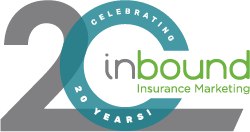8 Tips for Writing Article Headlines That Earn Clicks

First impressions matter. If you don’t make a good first impression, you might not get a second chance. This is especially true when it comes to online interactions.
Putting a weak title on great content is like covering up a designer dress with an ugly coat. You know you have a great dress, but no one else is going to see it.
For this reason, it’s important to take extra time to ensure you’re writing article headlines that engage.
Great Content Can Only Take You So Far
Great content can boost brand awareness and generate leads, but only if people decide to read it. Earthweb says there are more than 600 million blogs and that 7.5 million blog posts are being published every day in 2022.
Of course, few of these blogs are your direct competition – most of them are on topics that have nothing in common with what you publish. Nonetheless, it’s still an astounding number and it means you have to work incredibly hard to attract users’ attention. A killer headline can help.
What Goes into a Stellar Headline?
When crafting article headlines, you need to remember the ultimate purpose of the headline: to entice your target audience to read your article. To achieve this, you need to write an attention-grabbing headline that makes people want to learn more.
However, you’re not trying to attract just any readers – you’re trying to attract your target audience.
For example, let’s say your company provides bonds for contractors and you write an informative article on navigating the bonding process. Then you include the word “bail” in the headline because your keyword research shows this word is popular in searches. Your headline ends up attracting people looking for bail bonds, and users click away as soon as they realize the article in about contractor bonds. The people in your target audience never click on the article.
This is an extreme example to illustrate the point, but even more subtle missteps can undermine your goals – like writing a headline that appeals to insurance consumers when you’re trying to reach insurance agents, or vice versa.
You need to make sure your headline appeals specifically to your target audience. Otherwise, you might gain clicks, but your bounce rate will be high and you probably won’t generate leads.
1. Be Direct and Specific
You wouldn’t buy a can of food with a vague label – you’d want to know exactly what’s in the can before you buy it. Think of your headline as a label: readers want to know what the content contains. Use the headline to tell them right away.
2. Incorporate a Keyword
To gain organic search engine traffic, you need to use SEO tactics when writing your content – and this includes making your headline SEO friendly. This doesn’t mean keyword stuffing – forcing too many keywords into your headline will make it difficult to read. Instead, select one main keyword and include it in your title.
Since there’s a lot of competition for common keywords, a long-tail keyword may be the most effective choice. As these keyword phrases are specific, search volume is lower, but users are often looking for exactly what your content offers.
You can use tools like Jaaxy and Surfer SEO to find the most effective keywords to use in your headlines.
3. Consider User Intent
User intent refers to what people are looking for when they search online. SEO tactics that incorporate user intent go beyond matching keywords: they try to figure out what searchers are actually looking for. These tactics have become increasingly important as search engines have become more sophisticated.
Put yourself in the shoes of your readers. What are they likely to search for? What are they hoping to find? Once you consider your target audience’s point of view, writing appealing headlines becomes much easier.
Your readers are searching for solutions to their problems. Write a headline that makes it clear that your content contains those solutions.
4. Aim for the Goldilocks Length
According to Outbrain, the ideal title length is between 60 and 100 characters.
If your headline is too short, it might not convey your message effectively. On the other hand, if your headline is too long, readers might not read the entire thing or search engine results and social media posts may cut it short. Make your title as succinct as possible without sacrificing clarity.
5. Use Numbers When Appropriate
Listicles receive a lot of hate, but they continue to be popular because readers like them – and for good reason. When people read business blogs, they’re often looking for practical tips and solutions. They want content that’s easy to read with information that easy to apply. Listicles provide this.
Consider the following headlines:
- 5 Keyword Tools to Boost Your Website’s SEO
- 10 Ways You Can Save Money on Car Insurance
- 8 Steps to Keep Your Company Safe from Ransomware
When people see headlines like these, they know exactly what to expect and how the content will help them.
6. Choose Strong Words
Effective writing uses strong words and phrases. This is important in all types of writing, but especially in headlines, due to the limited space.
As Indeed explains, using powerful words in your headlines can evoke emotions and trigger curiosity. With the right words, you can show that your content is relevant to current events and trends but different from other content available.
When writing your headlines, don’t necessarily go with the first words you think of. Come up with some variations and think about how the different options trigger different emotions and connotations.
7. Don’t Resort to Clickbait
A bait and switch headline won’t help you achieve your goals.
Think about what happens if you use a clickbait headline. As modern consumers are pretty savvy, many will recognize a sensational headline for what it is and avoid clicking it. Some people might click out of curiosity, but then what? If your article doesn’t deliver what the headline promised, these readers will feel cheated.
You’re trying to earn users’ trust; therefore, clickbait is counterproductive. Your headlines need to be attention grabbing, but they also need to be honest.
8. Support a Great Headline with Other Great Elements
Your headline is important, but it’s still only one piece of the bigger picture.
Another key element to consider is the meta tag. This is a short description of your content. It doesn’t appear on the webpage itself, but it does appear in search results. If people find your article using a search engine, the meta tag might be the second thing they read.
Images are also important. If people share your article on social media, an image from your page can automatically populate. Using an eye-catching image can help you gain more clicks.
And, of course, you also need great content – after all, everything else is just the packaging. A headline can help users decide to click, but if they don’t like the content, they won’t stick around.
Do you need help writing great articles with irresistible headlines? Inbound Insurance Marketing provides customized article subscriptions. See which subscription is right for you.
